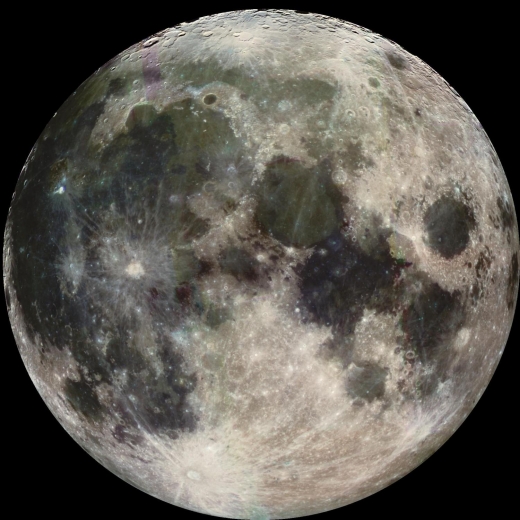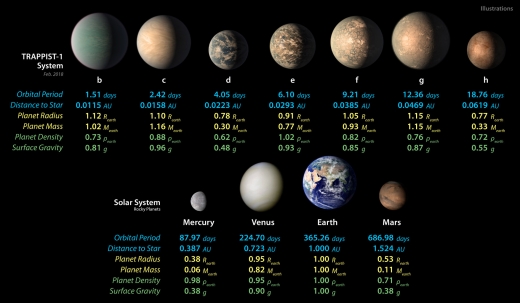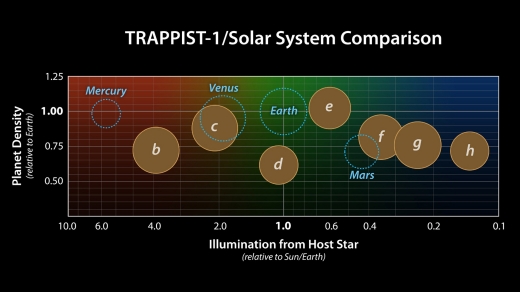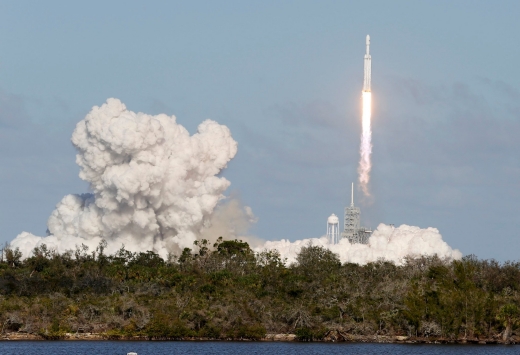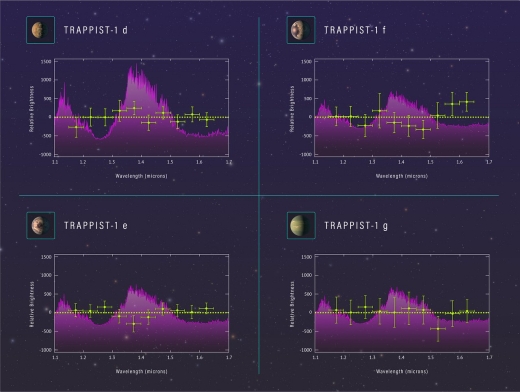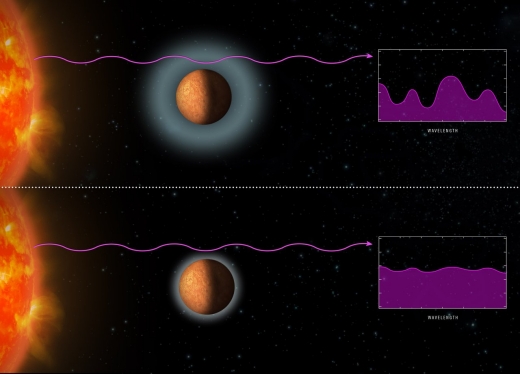Europa and Enceladus: Hotspots for Life
Icy moons around Jupiter and Saturn offer exciting venues for possible life elsewhere in our Solar System. But how do we penetrate surface ice to reach the oceans below? In today’s post, Kostas Konstantinidis surveys the field of in-situ operations on places like Enceladus and Europa. Enceladus will be a tricky place to land thanks to rough topography and polar lighting conditions. Europa poses its own challenges; once we’re down, how do we power up the technologies to get below the ice? Kostas developed a mission concept for DLR, the German space agency, to sample subsurface plume sources on Enceladus as part of the Enceladus Explorer (EnEx) project. He is currently working on a PhD thesis at Bundeswehr University (Munich) simulating a safe landing on that world, and tells me he hopes that by the end of his academic career, he will have ‘a nice mugshot of an alien microbe swimming around in its natural environment to show for it.’ How to get that mugshot is a fascinating issue, as he explains below.

by Kostas Konstantinidis
The search for life in the solar system has been one of the guiding goals of space exploration since its conception. The recent discoveries that the icy moons of the giant planets in our solar system contain vast oceans, has made them prime targets for that search. In particular, Jupiter’s moon Europa and Saturn’s moon Enceladus (Figure 1) are currently the most promising candidates among the icy moons, as they appear to fulfill the basic requirements for them to host life: the heat that is generated by the tidal pull of the parent planet maintains a subglacial ocean in the liquid state and in direct contact with the rocky core of the moon, through which reactions critical for the creation of the building blocks of basic life as we understand it can occur. Exchange processes through the thick ice shells covering those moons, much like in the polar regions of Earth, mean that further chemicals needed for life are transported from the surface where they have been delivered by e.g. micrometeoroids, all the way down to the ocean. The chemical makeup of plume jets found to emanate from the south pole of Enceladus by the recently decommissioned Cassini spacecraft further point to a chemically rich ocean hospitable to microbial life.

Figure 1: Jupiter’s moon Europa (left) and Saturn’s moon Enceladus (right), currently the most promising targets for the search of life in the solar system. Credit: Wikimedia
As evidence on the habitability of Europa and Enceladus is mounting, the question arises of where on these moons could possible microbial ecosystems exist, and how we could investigate them.
Signs of life and potential ecosystems on Europa and Enceladus
The currently most plausible hypothesis about where life might emerge and flourish in the oceans of the icy moons, is near possible hydrothermal vents on the ocean bottom. Around the hydrothermal vents an exotic energy generating process occurs: carbon dioxide, dissolved in ocean water, reacts to form organic matter. However, instead of sunlight as the energy source as is the case for our more familiar photosynthesis, microorganisms use the vent fluids’ chemical energy. This process is called chemosynthesis. Ecosystems of such chemotrophic microbes can thus flourish around these vents. After the discovery of such a hydrothermal vent in the bottom of the Earth’s ocean in 1977, it has been proposed that even life on Earth could have originated from such a location.

Figure 2: A hydrothermal vent in the bottom of the Earth’s ocean. Credit: Smithsonian Magazine
Once life is created near the vents, it can then migrate and populate other hospitable niches in the ocean of an icy moon (Figure 3). A first niche where microbes could survive is the interface between the ice shell and the ocean. Exchange processes transferring chemicals from the surface means that a concentration of chemicals and nutrients could be present on the bottom of the ice shell, from which microbial life could be sustained.
There are various transport methods through which any microbial life could be carried closer to the surface. The most direct is through channels that directly connect to the plumes on the surface. Such plumes have been observed on Enceladus, and there are strong indications that they exist on Europa [3]. Microbes from the ocean could be carried along with the ocean water, and then ejected to space via the plumes. The microbes would remain in their original state up to a certain depth under the plumes and could even form small microbial communities in pockets of liquid water close to the plume channel. Any potential life forms will be heavily altered by exposure to vacuum after they are ejected by the plumes, but signatures of life might be detectable in the plume material, and in the deposits of plume material on the surface of the icy moon.
There are also less dramatic ways for life and its signs to be transferred from the ocean, closer to the surface. Glaciological processes in the ice shell slowly transfer ocean material upwards. Geological characteristics on the surface point to the existence of subglacial lakes and liquid water pockets that might or might not be hosts to ecosystems of microbes originating from the ocean. Material from the ocean can eventually reach the surface, in particular in areas that offer evidence of intense glaciological processes like breaks on the ice shell and overturned ice blocks. Once on the surface, ocean material and any signs of possible life contained in it, are degraded by the strong radiation surrounding the giant planets.

Figure 3: Potential habitable regions on an icy moon, and transport mechanisms of ocean material to the surface [1]
The development of instruments to detect the signs of life, as well as study any existing life, is a fascinating field in its own accord. Here I will not discuss those instruments; I will describe instead mission concepts and some of the necessary technologies to deliver such instruments on their target environments on Europa and Enceladus.
Plume fly-through
A first mission concept would aim to take advantage of the “free samples” of fresh ocean material we are kindly offered from the plumes (Figure 4). In this concept, a spacecraft either flies through the plumes, analyzes the captured sample on the spot, and transmits the resulting data back to Earth, or it returns a captured sample to Earth where it is analyzed in dedicated laboratories.
The Cassini spacecraft until recently in orbit around Saturn flew through the plumes several times but was not equipped to perform the sophisticated measurements necessary for definitive life detection. A mission concept combining on-the-spot sampling and sample return to Earth is the LIFE (Life Investigation For Enceladus) mission, originally proposed in 2009 [1].
The main technological challenge is instrumentation to capture the sample at the high relative velocities involved, without evaporating it. This is done by using aerogel, a material similar to ballistic gel. If returning the sample for analysis to Earth, then very strict planetary protection rules mean that the risk of exposing the sample to the Earth environment must be minimal. This means that atmospheric reentry of the sample carrying vehicle must be very reliable, and that expensive installations and labs must be built to handle the sample in a safe way. A similar mission with sample return from the tail of a comet was the Stardust mission [5], that successfully returned a sample to Earth in 2006.

Figure 4: Cassini flying though the plumes of Enceladus. A plume flythrough mission would have the same concept. Credit: MailOnline
Surface and near sub-surface
As we saw above, thanks to glaciological processes material from the ocean can be transported all the way to the surface over thousands of years. Material on the surface and up to a meter close to it will be degraded by the intense radiation around the parent planet of the icy moon (especially for Europa’s parent planet, Jupiter). Therefore, sampling the surface, and especially the near subsurface, can allow the detection of certain signs of microbial life. We can gain access to the surface to perform these measurements using planetary landers. NASA are currently planning such a lander mission to Europa (Figure 6) [2].

Figure 5: Typical terrains of the icy moons. Left: a chaos terrain on Europa. Right: canyon terrain on Enceladus. Inset: A digital elevation model of a Europa terrain. Credit: NASA

Figure 6: Illustration of the NASA Europa Lander on the surface on Europa. Credit: NASA
Due to the various glaciological processes on Europa and Enceladus, the terrain tends to be very rough on these moons (Figure 5). This high terrain roughness significantly affects the design of the landing system. To land safely, the lander will have to sense the terrain and be able to autonomously decide on a new landing spot if the original one is found to be too risky. Hazard detection is performed by utilizing sensors like cameras and laser scanning lidar to identify hazards. On-board software then decides on the optimal landing area. The lander must also be able to know its own position with enough accuracy so that it can land accurately on a safe spot. Using input from the same sensors used for hazard detection, software is used to detect particular features, and then track them through time in order to be able to infer the landers position relative to them. On-board guidance software is used in case a landing trajectory must be calculated to a new safer landing spot. The lander thrusters are then commanded to follow this new trajectory (Figure 7).
Such a landing scenario is significantly more challenging than those of past Moon and Mars lander missions, where landing areas were less hazardous, and less landing accuracy was required, as a rover could typically be deployed after landing and drive for up several kilometers to interesting targets on the surface.

Figure 7: The landing sequence of the ESA Lunar Lander mission concept. A landing on the icy moons will follow a similar scenario [Credit: ESA Lunar Lander)
Another concept to sample the near subsurface are the so-called planetary penetrators. They are bullet shaped vehicles that are deployed from orbit and impact the planetary surface with a velocity of close to 300 m/s (1000 km/h). Thanks to the high impact velocity the penetrator is emplaced to a depth of a few meters under the ice. Once there it can deploy its instruments and sample the surrounding ice, which has been unaffected by the radiation on the surface (Figure 8).
A few penetrators have been sent to Mars and the Moon as secondary payloads, unfortunately with no success. A penetrator concept for the icy moons (Europa) is CLEP (Clipper Europa Penetrator) that was considered as a secondary payload for the future NASA Europa Clipper mission [6].
Penetrators can be a relatively inexpensive way to sample the surfaces of the icy moons but are risky, as their track record demonstrates. The main technological challenge for penetrators, is to develop a meaningful set of miniaturized instruments that can also withstand the high impact shock, as well as other resilient systems, like the communications subsystem to relay data from the measurements. A simpler version of the landing system described above could help with targeting a penetrator more accurately to safer areas.

Figure 8: The concept of operations of a penetrator for Europa. Inset: Illustration of a penetrator and its delivery vehicle. Credit: University of Surrey
Subsurface liquid water pockets
Water pockets in the ice shell of Enceladus or Europa are interesting targets for exploration for possible signs of life. Arguably the most promising spot for accessing near subsurface liquid water pockets is right under the plume sources on Enceladus (and possibly also on Europa). The combination of the relative ease of access to these water pockets and the freshness of the material contained in them makes them a very desirable target.
To access these subglacial areas, a probe must melt through up to a few hundreds of meters of ice to sample the potential liquid water pocket habitat. The melting probe is deployed to start melting by a lander. A mission concept to sample subglacial water pockets under the plume sources on Enceladus was developed (by the author) as part of the Enceladus Explorer (EnEx) project funded by the German space agency DLR [7][8].

Figure 9: Illustration of the Enceladus Lander concept [7]: A lander touches down inside the plume source canyon and deploys the IceMole melting probe (red circle on the left). A cut-out of a plume source canyon on Enceladus. Adapted from [9]
To melt through the few hundreds of meters of ice, a so called shallow melting probe is needed. Electrical power produced on the lander is transferred through a cable and powers electrical melting heads on the melting probe. By heating the melting heads on different sides of the probe the probe is maneuverable and can avoid obstacles under the ice such as meteorites, cracks, etc. The design of an appropriate cable is also a challenging proposition. It must be lightweight, though strong enough to withstand the tuck and pull from the surrounding ice. It must be able to be unrolled without getting stuck or causing other issues and must carry high power loads with minimal loss. To properly take advantage of the maneuverability, the probe must have an accurate knowledge of its position using on-board navigation sensors and be capable to autonomously make decisions to avoid subglacial obstacles. An important issue with such melting probes is the large amount of power needed to power them. Since a lot of power is lost during the transformation from electrical power to thermal on the melting heads, such a melting probe would have large power needs. Currently those power needs can be met only by small nuclear reactors on board the lander or at least with high capacity fuel cells (essentially a very high capacity battery). Both solutions face limitations, including mainly the large mass of reactors and the issues accompanying the use of nuclear material near a potential extraterrestrial habitat. However, the relative advantage remains, that the reactor stays in the surface and does not go under the ice where the potential habitat is.
An example melting maneuverable melting probe is the IceMole developed by FH Aachen in Germany. The probe uses combined screwing and melting for increased maneuverability. The IceMole was tested near Blood Falls in Antarctica in 2015 in an analogue scenario to melting the ices of Enceladus [10].
Subglacial water pockets tend to be in geologically rough areas. The plume source terrain on Enceladus is a good example of this. They are situated along the bottoms of canyons in the south pole of Enceladus, dubbed the Tiger Stripes (Figure 5). The rough canyon topography, along with the terrain texture resulting from the plume fallout that covers the canyon terrains with superfine snow, and in addition the polar lighting conditions, make a landing near the plumes very difficult, with accuracy and landing safety requirements much more demanding that any past automated planetary landing that we have attempted or are currently planning. An even more sophisticated version of the landing system discussed above will be needed for such a landing.
One of the most challenging problems of astrobiological planetary exploration that we have not yet discussed is planetary protection, i.e. the need to not contaminate any possible habitable niches in the target environments with microbial life from Earth. There are microbes that can withstand the radiation and vacuum of space for years tucked away in parts of a spacecraft. A lot of work goes on for sensitive missions to identify and limit the bioload that remains on a spacecraft or lander that is to be sent to a sensitive area. Such microbes can be very persistent and reducing microbial loads to within acceptable levels can be a daunting task. With the lander aiming to land right next to an opening that very likely leads directly to the ocean of an icy moon, reducing the risk of inadvertently introducing Earth microbes and other potentially damaging materials brought from Earth becomes a driving design requirement. Considering the risky nature and statistics of past planetary landings this will be a difficult thing to ensure. The melting probe that will directly access the potential habitat must be sterilized in levels that have been so far unprecedented in planetary protection.
Accessing the ocean
The subglacial ocean is the main source of interest in the icy moons, as it is the most likely source and host of currently existing microbial life on the icy moons. To gain access to the ocean itself, a mission would have to melt through the entire ice shell for at least a few kilometers. A probe could study the ice-ocean interface or simply float in the ocean while sampling it. If it were to sample a hydrothermal vent on the ocean bottom, a submersible would have to navigate several kilometers to the bottom and locate a vent there. It would then be able to study the potential source of life on the icy moons and arguably the single most promising location in the solar system for the existence of life.
Figure 10 illustrates a mission concept to deploy a submersible in the ocean of an icy moon. As the bulk of the science of such a mission is to be performed by the submersible, it must be ensured that it reaches the ocean with a high likelihood. This means that for the mission to be viable, the landing must be safe and reliable, and significantly more so than past planetary lander missions have been.

Figure 10: Left: Concept for the deployment of a submersible to explore the ocean floor of Europa. Credit: Cornell University. Right: Nuclear heater melting probe concept. Credit: NASA
Melting through several kilometers of ice will be quite a challenge for a mission to access the ocean of an icy moon, and potent melting methods will be necessary. Of course, the shallow melting probe described above could be adapted for deep melting, but the length of the cable needed could prove problematic. A similar method for melting through large amounts of ice is by using high energy laser beams powered by a high-performance energy source on the lander, through a fiber optic cable. The main advantage here is that power losses associated with an electrical cable and melting head are eliminated, thus making melting more efficient. This would require however even larger amounts of power generated at the surface by the lander, which in turn would mean even heavier power sources. Such a melting probe is being developed by Stone Aerospace [11].
A method of melting through the ice that completely circumvents cables, is using thermal power directly provided on-board the melting probe, by nuclear heat sources. Such heat sources have been used in space exploration since the 1970s and are non-fissile isotopes of plutonium or other radioactive material, that thanks to active nuclear reactions produce large amounts of heat (Figure 11). Bricks of such materials are enclosed in vessels that are highly resistant to impact and explosion and are used to either heat the surrounding ice to produce hot water jets (Figure 10), or to melt the ice via direct contact. Hot water jets can be used to melt with some degree of maneuverability. Such power sources however face possible issues with transporting nuclear material to a potential extraterrestrial habitat. These concerns are somewhat alleviated by enclosing the radioactive material in their containment vessels. The heat generated by these nuclear sources cannot be “turned-off” and it could act as a heat source for Earth microbes that hitched a ride on the melting probe to potentially survive and contaminate the ocean. Still such power sources offer a relatively lightweight and efficient way of melting through the ice. Communication back to the lander is done by dropping behind radio or acoustic relay stations in the ice.

Figure 11: A pellet of plutonium-238, used for radioisotope thermoelectric generators. The pellet can be seen glowing from its own heat. Credit: Wikimedia
Once in the ocean, a submersible is deployed, and it must navigate towards a plume source. This must be done for a depth of tens of km, despite the ocean currents, the lack of reference points in the environment that would help in localizing the submersible, and the lack of contact to the operators on Earth. The submersible must then communicate the collected data to a relay station that remains on the ice-ocean interface, that will then forward the data back to the lander.
This requires impressive capabilities of autonomously localizing itself in the ocean and, to large extent, autonomous operations. The DLR funded Europa Explorer (EurEx) project has been developing navigation and autonomy methods for such an exploration scenario [12] (Figure 12). The ARTEMIS submersible being developed by Stone Aerospace is also another example of technology development necessary for the exploration of the oceans of the icy moons [13]. A recent study by Cornell university investigated alternative mobility in the oceans of the icy moons by using (appropriately squid-like) biomimetic soft robots, and novel power harvesting methods via electromagnetic tethers deployed in the ocean [14]. Such alternative approaches hold promise for new and unexpected ways to explore the icy moons.

Figure 12: Schematic overview of a possible mission scenario for the EurEx submersible. The submersible is deployed at the ice-ocean interface, navigates to the ocean bottom for scientific measurements, and returns to the deployment point for data transfer and battery recharging [12]
Conclusion
The search for extant or extinct life in the solar system has been one of the driving motivations behind space exploration. Up to now several missions have explored Mars and have identified it as a very promising place where microbial life could have once existed. The next step for the search for life in the solar system is then to turn to the places in the solar system most likely to currently host life, the icy moons. A programmatic shift in priorities towards the search for life might be in the works in the agencies as seen by the establishment of an Ocean Worlds program by NASA [15]. An ambitious stepwise exploration program in the coming decades, comprised of the mission concepts described above, will be one of the most challenging undertakings in the history of space exploration. It will however help answer some of the most fundamental questions of mankind about the origin and provenance of life in the universe.
References
[1] Europa Lander SDT Report & Mission Concept, presentation to OPAG in Atlanta, GA, Kevin Hand et al., 2017
[2] Europa Lander Study 2016 Report, Europa Lander Mission Concept Team, 2016, https://solarsystem.nasa.gov/docs/Europa_Lander_SDT_Report_2016.pdf
[3] https://www.space.com/36464-jupiter-moon-europa-water-plume-hubble.html
[4] LIFE – Enceladus Plume Sample Return via Discovery, Peter Tsou et al., 45th Lunar and Planetary Science Conference, 2014
[5] https://stardust.jpl.nasa.gov/home/index.html
[6] CDF study report CLEO/P, Assessment of a Europa Penetrator Mission as part of NASA Clipper Mission, 2015,
http://sci.esa.int/future-missions-department/56440-assessment-of-a-europa-penetrator-mission-clep-cdf-study/#
[7] A lander mission to probe subglacial water on Saturn?s moon Enceladus for life, Acta Astronautica, v. 106, p. 63-89, 2015, https://www.sciencedirect.com/science/article/pii/S0094576514003610
[8] http://www.dlr.de/rd/en/desktopdefault.aspx/tabid-10572/18379_read-42824/
[9] The possible origin and persistence of life on Enceladus and detection of biomarkers in the plume., C.P. McKay et al., Astrobiology. 8 (2008) 909–19. doi:10.1089/ast.2008.0265.
[10] Blood Falls – EnEx probe collects first ‘clean’ water samples, DLR press release, 2015, http://www.dlr.de/dlr/presse/en/desktopdefault.aspx/tabid-10172/213_read-12733/#/gallery/18529
[11] VALKYRIE, A prototype cryobot for clean subglacial access and sampling, http://stoneaerospace.com/valkyrie/
[12] Design of an Autonomous Under-Ice Exploration System, Mark Hildebrandt et al., 2013, http://ieeexplore.ieee.org/document/6741164/
[13] ARTEMIS, The Robotic Search for Life on Icy Worlds Begins in the Analog Environment Beneath the McMurdo Ice Shelf, http://stoneaerospace.com/artemis/
[14] Soft-Robotic Rover with Electrodynamic Power Scavenging, NIAC Phase 1 report, Cornell University, https://www.nasa.gov/sites/default/files/atoms/files/11-2015_phase_i_mason_peck_soft_robotic_rover_electrodynamic_power_scavenging.pdf
[15] https://www.nasa.gov/specials/ocean-worlds/
[16] The European Lunar Lander: Robotics Operations in a Harsh Environment, Presentation, Fisackerly, R.,
http://robotics.estec.esa.int/ASTRA/Astra2011/Presentations/Session%203A/01_fisackerly.pdf

